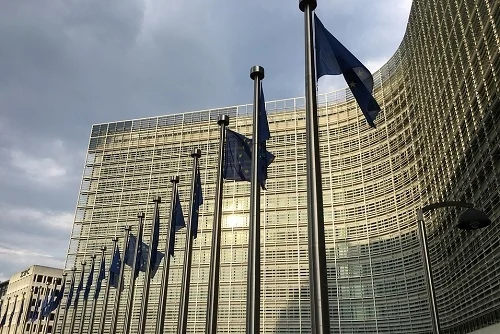ANALYSIS: ESTR emerges from Euribor’s shadow in Euro interest rates
20th January, 2025|Luke Jeffs

The European Union’s controversial active account regulation is targeted at the largest short-term interest rate (STIR) derivative market, based on the three-month Euribor futures contract traded at ICE Futures Europe in London.
But another Euro short-term interest rate derivatives market has emerged in the past two years, based on the overnight Euro Short-Term Rate (ESTR), the risk-free rate preferred by European regulators.
Chicago’s CME Group launched the industry’s first futures contract to reference ESTR in late 2022 quickly followed by Frankfurt’s Eurex and London’s ICE Futures Europe.
Eurex had in December the largest market by trading volume (2.7 million lots which equalled 56.7% of the total), ICE had last month open interest of 783,3700 lots (67.8%) and CME Group had a single-digit market share by volume and open interest, according to FOW Data.
The ESTR futures market traded 4.8 million lots in December which means it is still much smaller than Euribor (29.5m contracts) but the liquidity pool is growing steadily as trading firms look to listed, capital efficient alternatives to their ESTR exposure in the over-the-counter (OTC) market.
Mark Rogerson, executive director, EMEA head of interest rate products at CME Group, said: “ESTR as a benchmark across listed and OTC is already prevalent in the first year of the yield curve, but it remains the norm to use Euribor as the primary listed instrument further out in the reds and greens where the liquidity is more established than in ESTR.”
“ESTR is becoming the primary instrument in the first year - the white contract months. In any aspect of funding, I think ESTR is now the preferred benchmark, simply because it is an overnight rate and more correlated to real funding costs.”
Rogerson said ESTR is growing in popularity because it is more predictable than the three-month Euribor and the risk-free rate future allows traders to manage stub risk, which relates to the gap between today and the nearest liquid future.
When the first ESTR futures were launched, they were seen as an alternative to Euribor but ESTR has evolved over the past two years.
Caterina Caramaschi, vice president, financial derivatives at Intercontinental Exchange, said: “We now know that ESTR and Euribor can co-exist because there is utility for both. We are seeing clients trading ESTR futures by moving ESTR positions from the OTC market and we are not seeing a dip in Euribor linked to an increase in ESTR. Over time, we think ESTR co-exists with Euribor as another tool for people to manage their European rates risk.”
Matthias Graulich, a member of the Eurex Clearing Executive Board, suggested ESTR is becoming more relevant with firms tending to start trading Euribor first then trade the basis between the two rates and, finally, switch into ESTR.
Graulich said: “This is why it is important for us to work with the market, which is increasingly interested to trade ESTR rather than just Euribor, to further develop ESTR liquidity, both on- and off-book.
“Here the STIR (Short-Term Interest Rate) Partnership Programs plays an important role in two dimensions: we want to win business from banks’ asset liability management books; and we want the banks to make off-book markets, so all these large banks that are no longer on-book market-makers, we want them to provide off-book liquidity in ESTR futures to their clients.”
Deutsche Boerse’s Eurex launched in November 2023 its STIR Partnership Programme which pays incentives to clients for certain types of STIR liquidity.
ICE became in April last year the first exchange to launch ESTR options narrowly beating CME Group which made its ESTR options contracts available in May.
Caramaschi said: “Our ESTR future is developing well, with over 800k lots of open interest, of which over 70% is held by end clients. We have the best top of book and our next focus is to build our ESTR options, now that liquidity in the futures is there to support an options market.”
CME is also innovating around ESTR and plans to launch in February a futures contract that allows firms to trade the Eur/USD cross-currency basis drawn from CME’s ESTR futures, Secured Overnight Financing Rate (SOFR) futures and the group’s Eur/USD futures.
Rogerson said: “It’s the first time a contract of this nature has existed. It leverages our SOFR contracts, confirms our commitment to ESTR and adds to the range of products that customers can trade in the short-end Euro and Dollar space.”
He added: “We think that adoption of ESTR as a benchmark will continue to grow as customers become more familiar with overnight indices. In time, it’s highly likely that both benchmarks will be equivalent in size and will co-exist happily.”
Please join us at FOW Trading London on February 13 2025 where we will discuss influence of EMIR 3.0 on European trading and clearing, the emergence of the Euro Short-Term Rate (ESTR) market and the increase in activity due to changing UK and European interest rates. See here for more details: Trading London 2025


